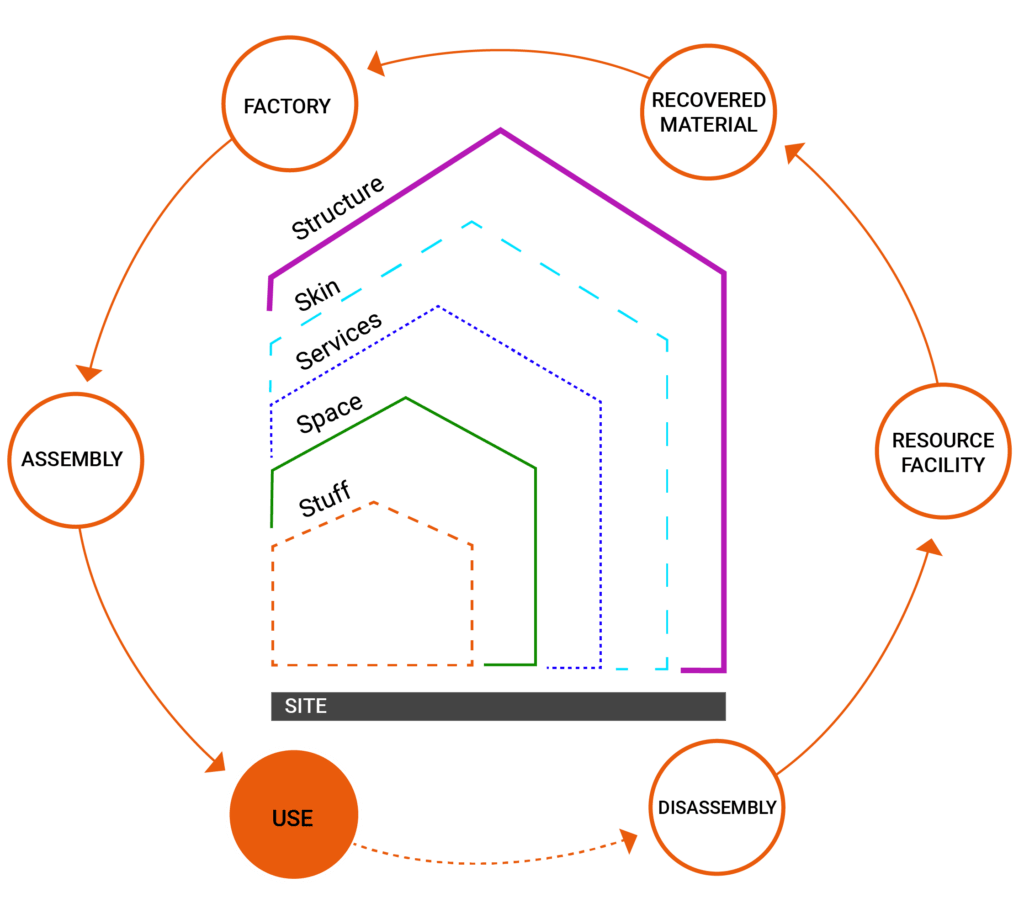
A circular economy is defined in London Plan Policy SI7 ‘Reducing waste and supporting the Circular Economy’ as one where materials are retained in use at their highest value for as long as possible and are then reused or recycled, leaving a minimum of residual waste. The end goal is to retain the value of materials and resources indefinitely, with no residual waste at all. This is possible, however it requires transformational change in the way that buildings are designed, built, operated and deconstructed.
At Watkins Payne, we produce circular economy statements and develop circularity strategies with project teams to explore how various measures can be incorporated into the design, construction and operation processes for a project. Applying circular economy thinking to the built environment is complex, with many overlapping issues and trade-offs to consider. However, Watkins Payne have experience in advising project teams of the core guiding principles that support the circular economy and which are appropriate for the specific project.



To implement circular economy principles most effectively, it is helpful to explore high level strategic opportunities as early in the development process as possible. Choosing the most appropriate circular economy strategies will depend on context, the nature of the development, owner and occupier needs. The strategy should be determined during concept design and form part of the development brief.
The best way to understand the circular economy principle is by viewing it in ‘building layers’. Each layer has its own life cycle that may require a different approach or different solution. We can help you achieve the adoption of this strategy for your project using circular economy methodologies.

Get in touch with our sustainability team to assist in developing circular economy solutions that meet the needs of your project.